In this article, you’ll learn how to plan a successful SEO keyword strategy, including:
- Prioritizing keywords and planning your calendar.
- Understanding what kind of content your audience wants.
- Using keyword tools to make research a breeze.
Ready? Let’s dive in.
[Tweet “The ultimate keyword strategy to fill your editorial calendar.”]
Plan Your Keyword-Driven Content With This Editorial Calendar Template
Part of developing a keyword strategy is having a place to store your research and ideas. This free editorial calendar template is perfect for optimizing your new keyword strategy and making the most of your projects.
[content_upgrade_shortcode]
Table of Contents
- What is a Keyword Strategy?
- How to Create Your Keyword Strategy
- Expand Your List With Keyword Research
- Prioritize Your Keyword List
- Build Your Content Calendar
What is a Keyword Strategy?
Today, 53% of all traffic comes from organic search:
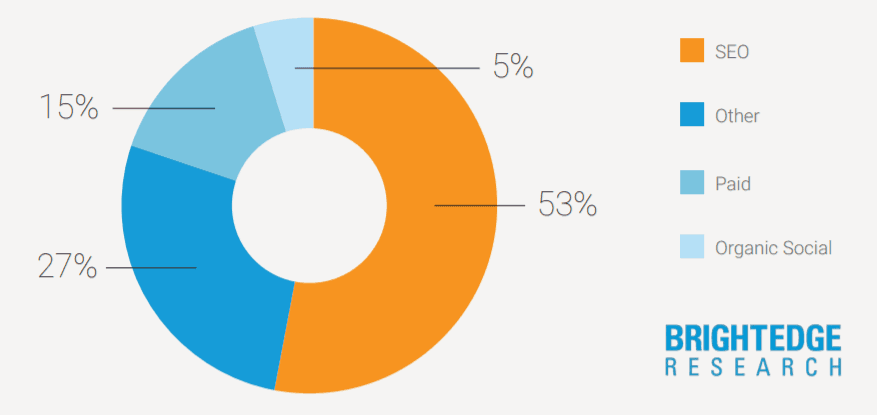
If you want to bring more of that traffic to your site, you’ll need a content marketing strategy built on keyword research. Effective keyword research helps you to better understand your target audience by providing data-driven insights on the words, phrases, and questions they’re searching for when they go online.
Keyword research can help you answer questions, like:
- What keywords related to my topic are people searching for?
- How hard will it be to rank for a specific keyword?
- What keywords are performing well on competitor sites?
- What type of content should I create if I want to rank for a specific keyword?
- Are people who search for a specific keyword likely to become customers?
Hold on — simply making a list of keywords isn’t enough. To consistently create content that gets great results, you need to make smart choices about which keywords to go after.
That’s where keyword strategy comes in.
A keyword strategy is a high-level overview of the core topics and long-tail keywords you want to go after, along with a plan to create the right kind of content to satisfy user intent. It’s a data-driven content marketing plan packed with strong content ideas that will get results for your business.
With your SEO keyword strategy mapped out, you have a roadmap your entire marketing team can use to rank for popular search terms.
How to Create Your Keyword Strategy
Now that we know what a keyword strategy is, it’s time to create your own. The most important goal in the keyword research process is to find the content topics your audience wants to know about. That means you need to start by getting to know your audience.
Understand Your Audience
At first, you might have some keywords in mind that you think you want to rank for, but the keywords you want to rank for aren’t necessarily the ones your audience is searching for. That’s why it’s critical to know your audience. Think through what your audience wants, and then use keyword research to transform those insights into data-driven content topics.
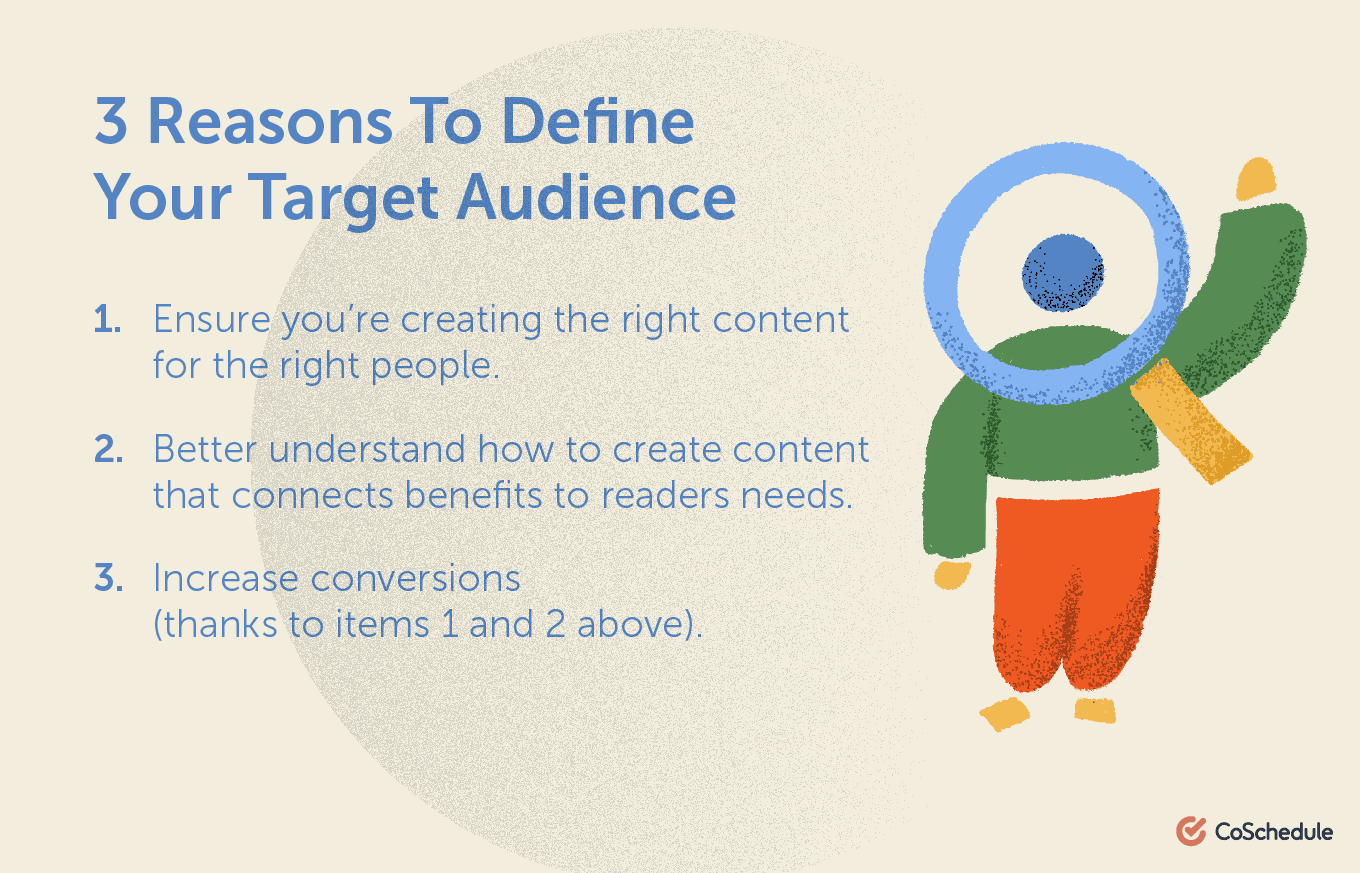
For example, Peck’s is a barbecue joint based in Virginia that wants to grow their business by improving their presence in search results pages. To help them understand their audience, you’d want to ask questions like:
- Who is searching online for barbecue?
- Why are people searching for barbecue?
- What types of barbecue, sauces, recipes, etc. are people searching for?
- What words do they use?
- What questions do they ask?
- Are there seasonality trends? Do people search for barbecue more in the summer?
By asking questions like these, you can start to build reader personas for your target audience.
Once you’re clear on who you’re writing for, you can create content that aligns with what your ideal customer is looking for.
Start With Seed Keywords
Once you understand your audience, you’re ready to start keyword research.
Start by identifying a few seed keywords.
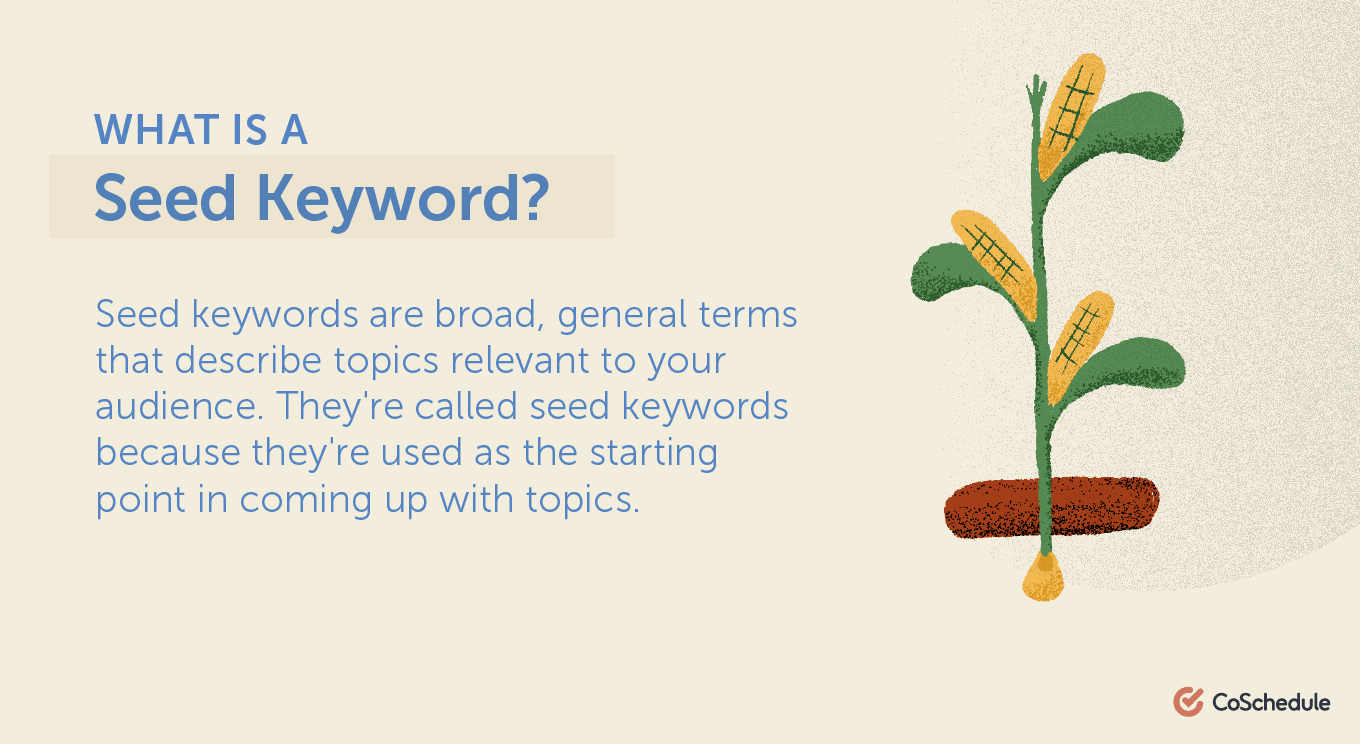
Seed keywords are broad, general terms that describe topics relevant to your audience. They’re called seed keywords because they’re used as the starting point in coming up with topics.
You’ve probably already come up with some initial ideas for keywords as you reflected on your audience. These could be services, products, or other topics relevant to your site. Use a keyword list spreadsheet to track all the ideas that come to mind. You’ll expand it as you continue the research process.
Don’t spend too much time on this initial step. Your initial ideas are just a starting point, and many of them won’t be worth going after.
Next, brainstorm more ideas to expand your list. Go back over your list of terms, one by one. Brainstorm subtopics that might fit within each of the initial topics you came up with. For example, if you had “barbecue styles” on your list, you might come up with “Carolina barbecue”, “Kansas City barbecue”, and “Memphis barbecue” as subtopics.
Finally, think about keywords related to the products and services you offer. For example, Peck’s might decide to go after “barbecue delivery”. Add search terms related to those offerings to your list, too.
[Tweet “Seed keywords are broad, general terms that describe topics relevant to your audience.”]
Build Your List With Keyword Tools
By now you should already have quite a few promising keywords.
Now, it’s time to blow up your list.
Keyword research tools let you generate thousands of promising keywords based on your initial ideas — in seconds.
Most keyword tools are pretty simple. Simply enter your seed keyword, and you’ll get back thousands of relevant suggestions.
Free Keyword Tools
Google’s Keyword Planner is historically the go-to choice for free keyword research. You can be confident your data is accurate with Keyword Planner, since it comes straight from Google. To access it, you just need to set up a Google AdWords account. Be warned: it comes with some limitations — including very broad buckets for search volume.
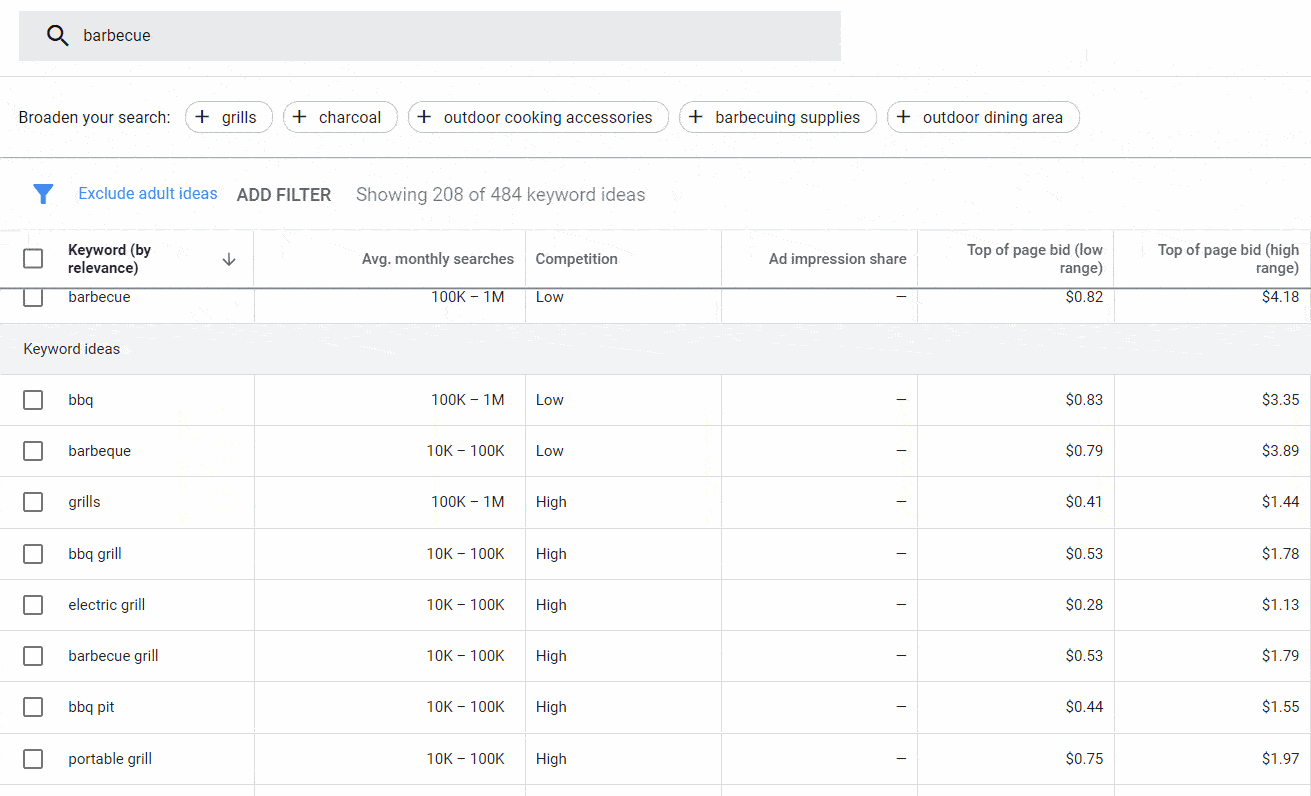
Neil Patel’s Ubersuggest is another strong free keyword tool that provides data on search volume, ranking difficulty, and more — but the free version limits the number of daily searches you can make.
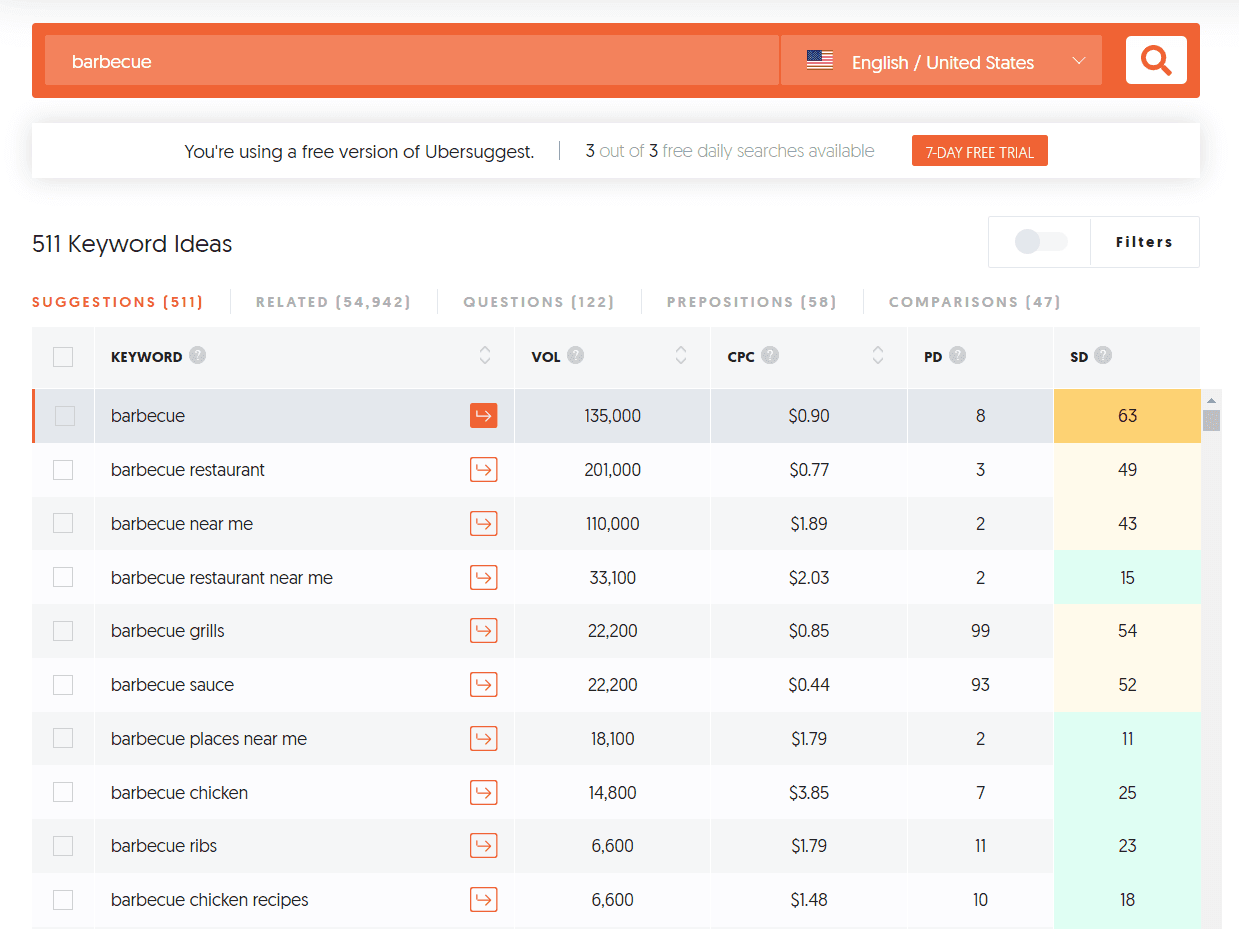 Keyword Surfer is a simple, free browser extension that offers suggestions for related search terms, along with data on search volume, organic traffic, and keyword usage… all in your Google search results.
Keyword Surfer is a simple, free browser extension that offers suggestions for related search terms, along with data on search volume, organic traffic, and keyword usage… all in your Google search results.
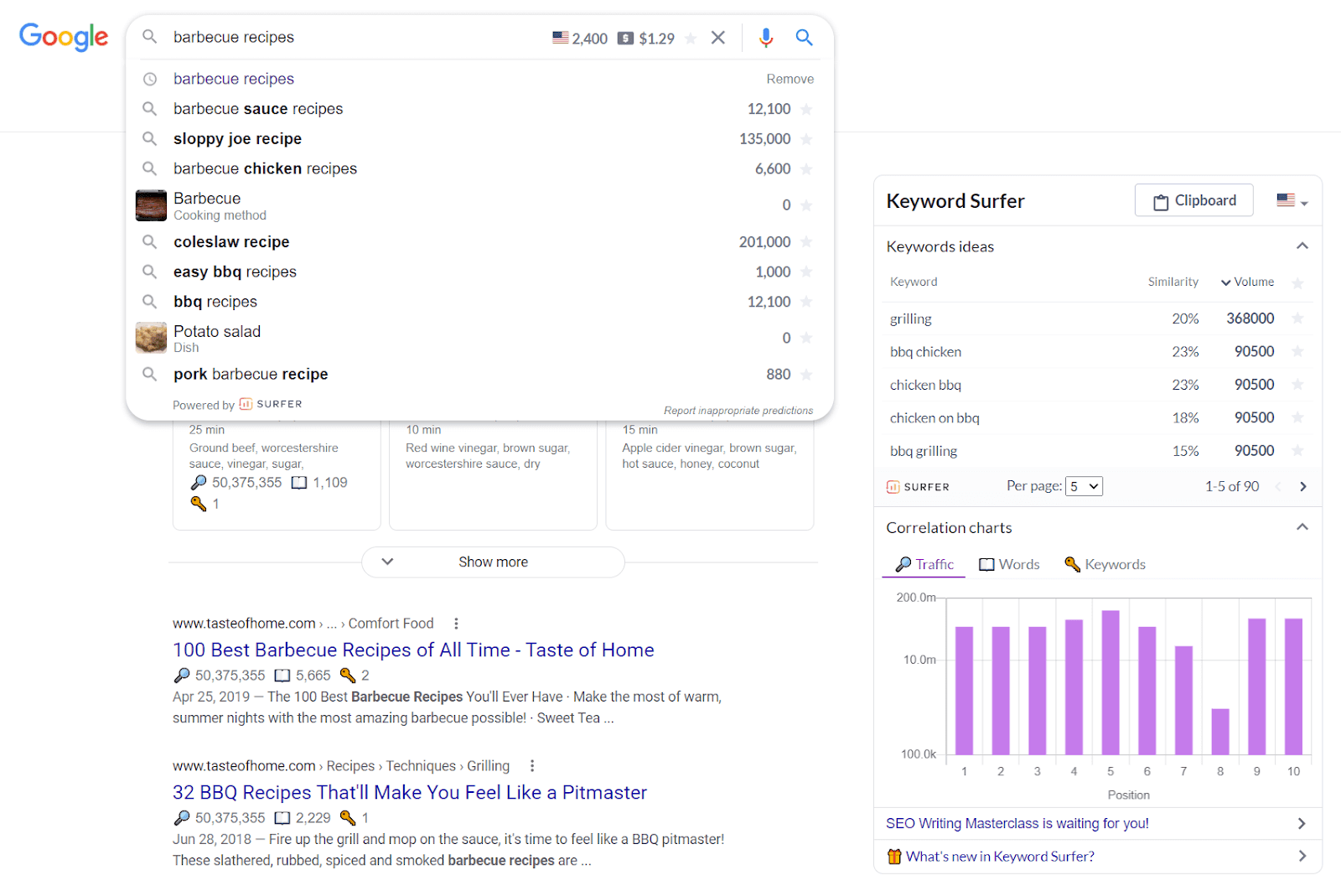 AnswerThePublic is a great tool to help you identify long-tail keywords. While it’s known for surfacing common and often surprising questions around a given topic, it also generates hundreds of additional suggestions:
AnswerThePublic is a great tool to help you identify long-tail keywords. While it’s known for surfacing common and often surprising questions around a given topic, it also generates hundreds of additional suggestions:
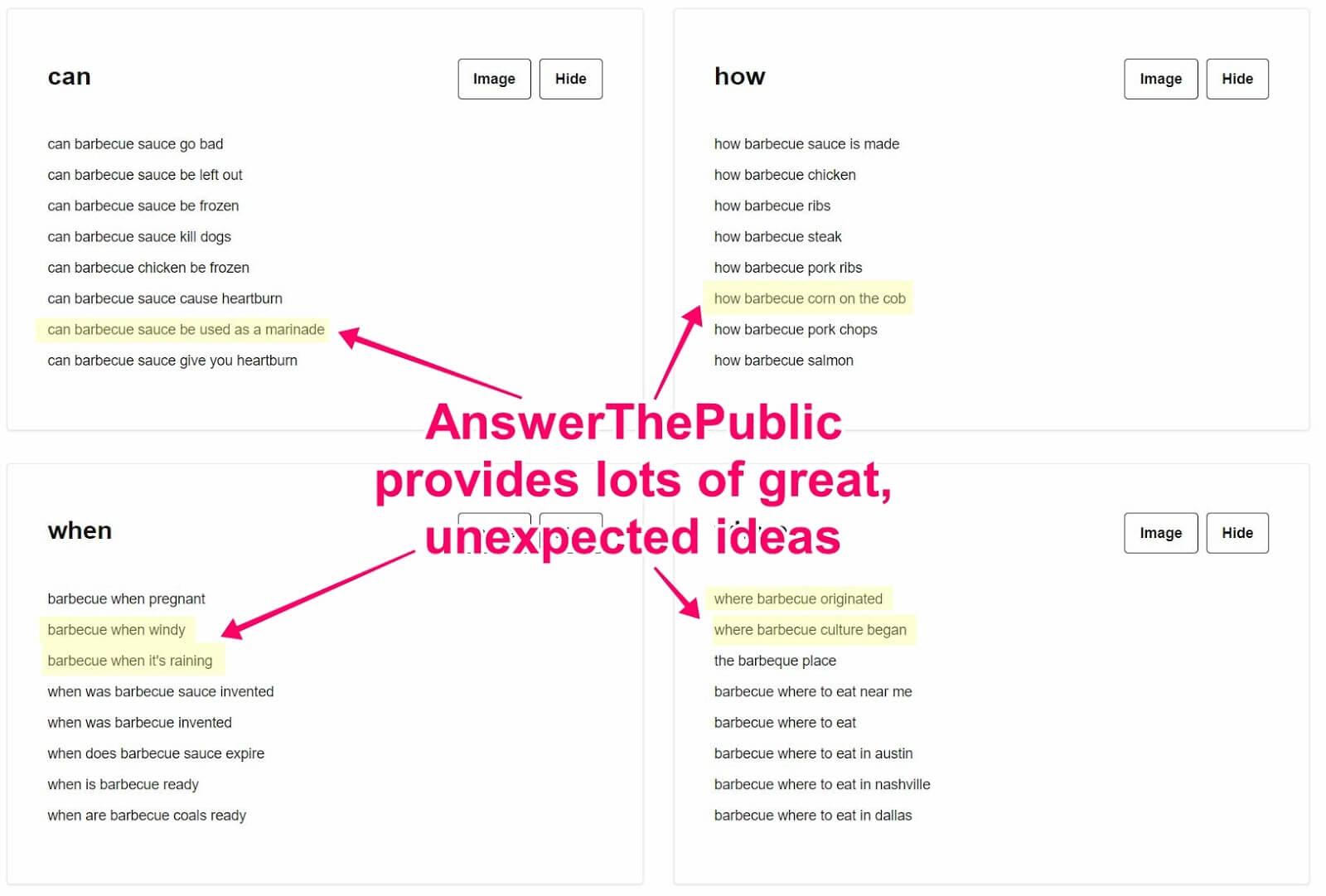
Paid Keyword Tools
While you can do a lot with free tools, paid keyword tools can make your job a lot faster and easier.
The leading paid tools deliver stunning results. You can generate hundreds of thousands of ideas, get detailed keyword analytics, identify commonly asked questions, and save lists of potential topics — all starting from a single seed keyword.
All of these options can help you quickly spin up thousands of recommendations:
- Ahrefs Keyword Generator
- Moz Keyword Explorer
- SEMRush Keyword Magic Tool
Expand Your List With Keyword Research
Keyword tools can help you identify a ton of amazing content ideas for your site, but they come with a catch. Most of the ideas they generate are closely related to the seed keywords you started with, which means there are still lots of great topics you could be missing.
To find more creative topics, it’s time to do some audience research to identify the questions and topics your readers want to learn about.
Find Topics on Reddit
Reddit is a marketer’s dream. You can listen in on the conversations your target audience is having right now and learn the exact challenges and questions they’re talking about.
To get started, just head to Reddit and search for your topic and start exploring the subreddits that come up:

Note the threads that have lots of comments. You can pull up the most active recent threads by searching for top conversations:

With this strategy, you can zero in on lots of super-specific keywords, like “wagyu brisket” and “smoked pork butt sandwich”, that you’d never find any other way.
To speed up the process, check out Keyworddit — a free tool that extracts the most common keywords from specific subreddits. Just pop in the name of a relevant subreddit, and Keyworddit gives you a keyword list that’s organized by monthly search volume:
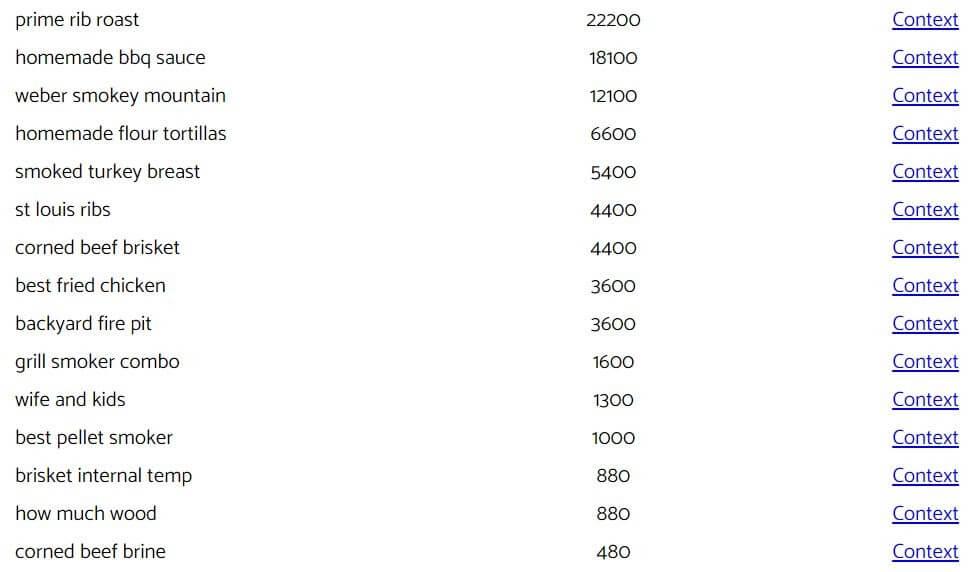
Check Out Common Questions on Quora
Quora is another great place to find out what your target customer wants to know.
Just go to Quora and search for your topic:

Scroll through Quora, looking for questions that have gotten a lot of upvotes:
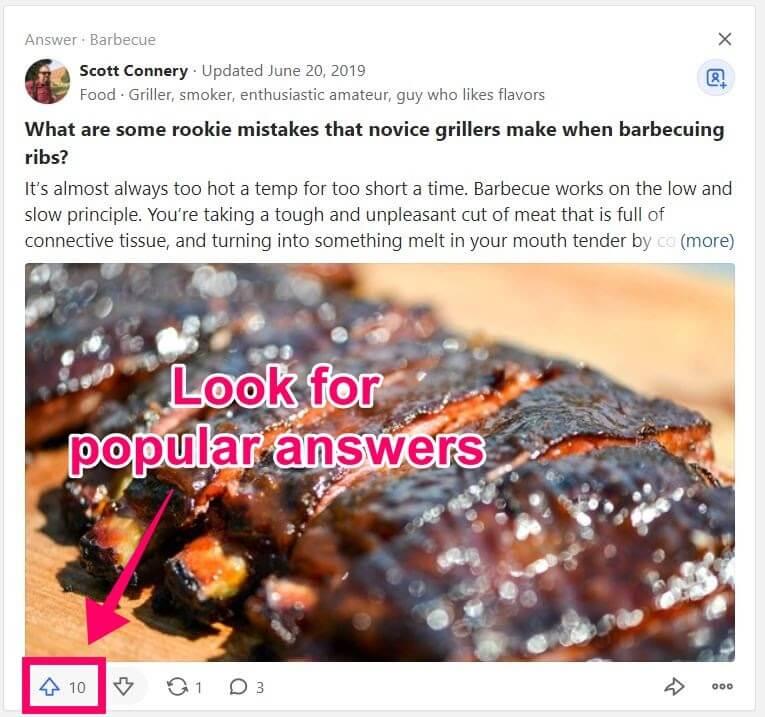
Click on the question, and you can view a list of related questions that people are also asking:
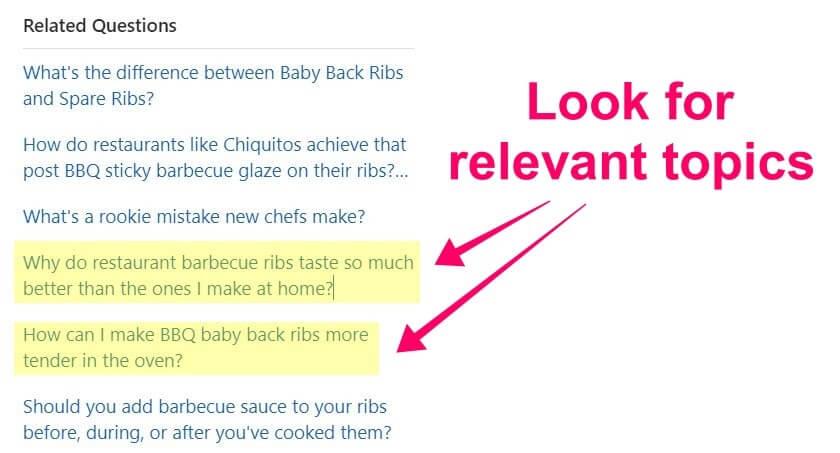
With these questions, you should already have plenty of insights into what your target customer wants to know.
The best part? We’ve only scratched the surface.
See What People Also Asked
Probably the best way to find out what questions users are asking is to go straight to the source: Google.
Just search for your keyword and scroll down to the “People also ask” section. You’ll get loads of questions that can be a great starting point for content creation:
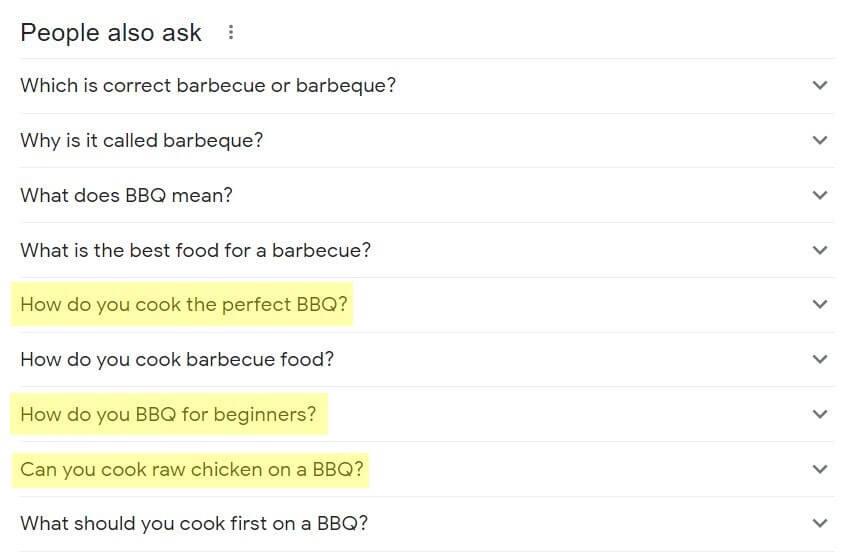
To make it even simpler, try AlsoAsked. It makes it easy to pull up all of Google’s “People also ask” questions for any given search term in seconds. Google also offers lots of other ways to identify relevant search terms.
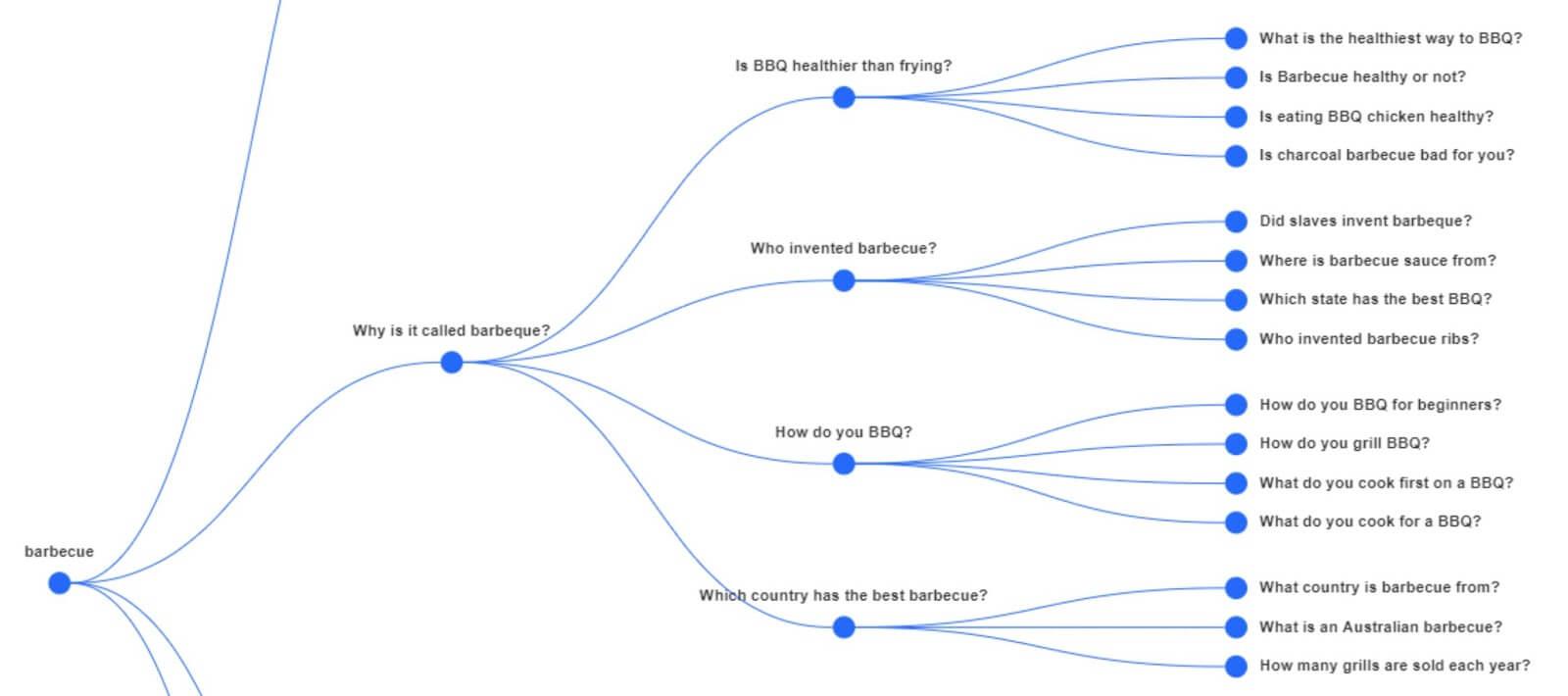
Explore Google Suggest
Google also shows you common search queries as soon as you start a search:
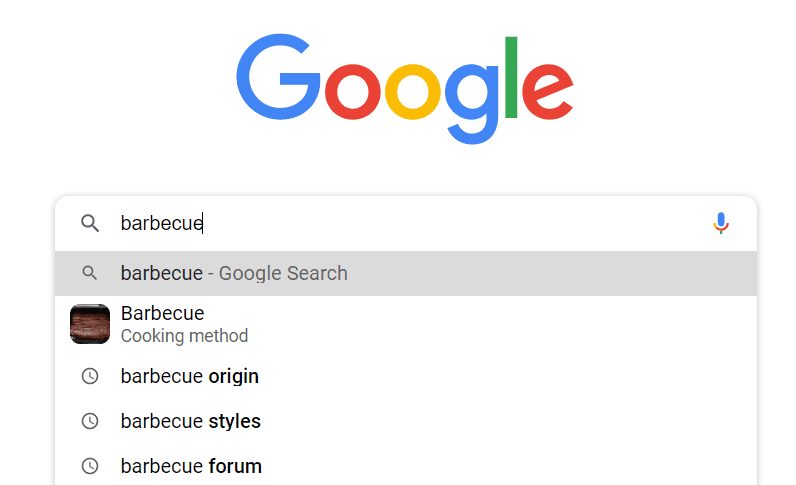
Since Google is suggesting these searches, you can be confident that they have a high search volume.
Pro tip: Use the Keyword Surfer extension to view exact search volumes for Google’s suggestions.
You can also find additional suggestions with Google’s related searches. Simply search for your search term and scroll to the bottom to view related keywords:

Continue to explore these related searches, and you’ll see even more relevant keywords — including lots of valuable, long-tail keywords that can make for great content topics:

Prioritize Your Keyword List
By now, you should have an enormous list of keyword ideas, but you don’t want to go after keywords randomly — you want to focus on the topics that will drive the biggest results for your business. As you start prioritizing your list, it’s critical to understand that different keywords will deliver very different results.
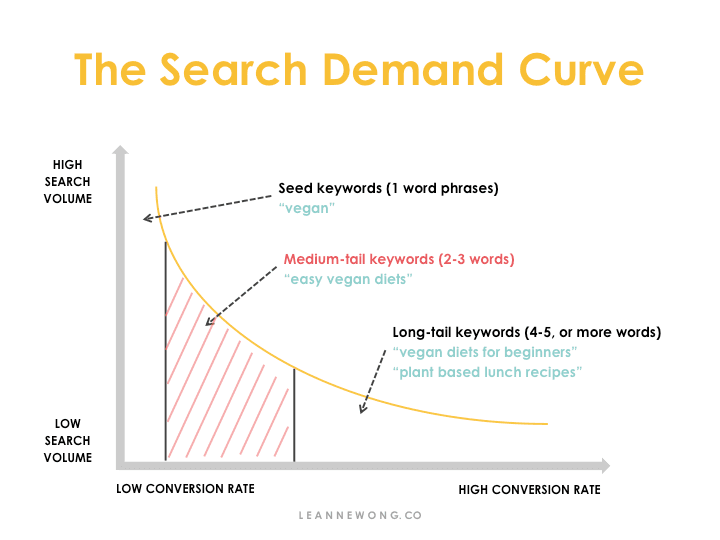 Head terms are broad, single-word keywords. These terms reflect a variety of different search intents. For example, someone searching for “barbecue” might want a barbecue recipe, places nearby that deliver barbecue, or a forum for barbecue lovers. As a result, head terms generally don’t convert very well, and while they have high search volumes and drive a lot of traffic, they can be very competitive and hard to rank.
Head terms are broad, single-word keywords. These terms reflect a variety of different search intents. For example, someone searching for “barbecue” might want a barbecue recipe, places nearby that deliver barbecue, or a forum for barbecue lovers. As a result, head terms generally don’t convert very well, and while they have high search volumes and drive a lot of traffic, they can be very competitive and hard to rank.
Body keywords are two- and three-word phrases that are more specific than head terms and still get strong search volume. Often, these terms reflect a clearer search intent. “Best chili recipe” and “coffee near me” are examples of body keywords.
Long tail keywords are longer, four-or-more-word phrases. Individually, they tend to get lower search volume — typically 200 searches per month or lower — but they account for nearly 40% of online searches. Since they’re highly specific, they tend to convert much better than shorter keywords.
[Tweet “Long tail keywords account for nearly 40% of online searches.”]
Target High Volume, Low Difficulty Keywords
To decide which keywords give you the best chance of ranking, you’ll want to look at two key metrics: search volume and keyword difficulty.
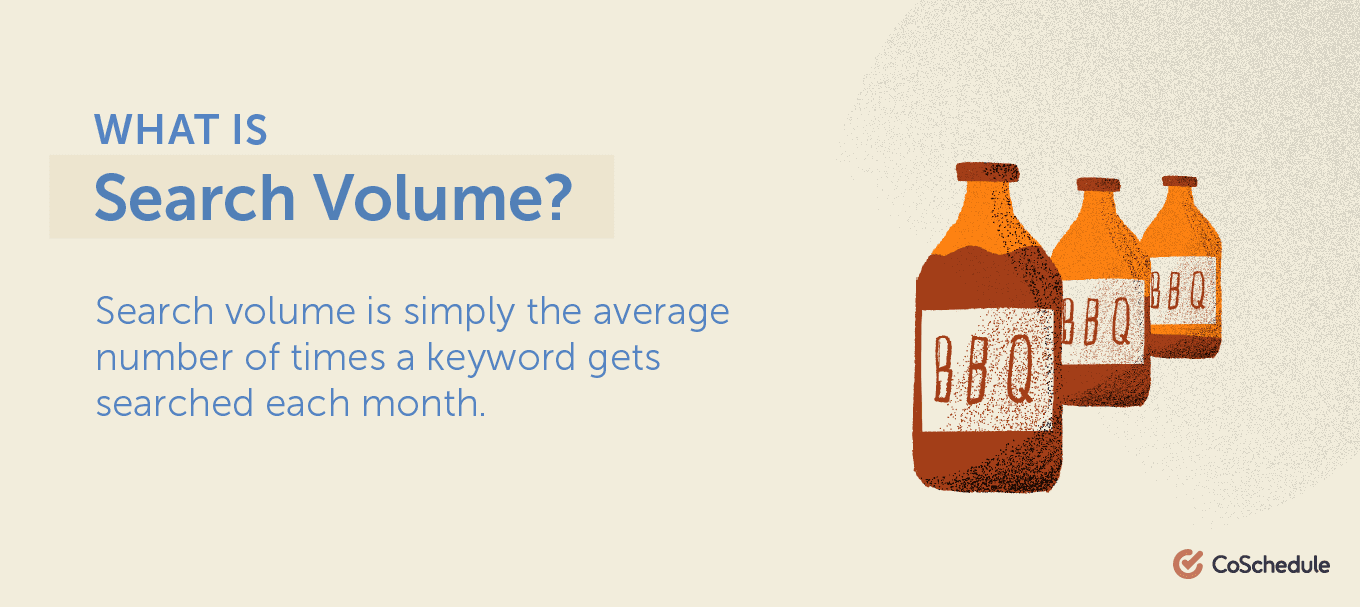
Search volume is simply the average number of times a keyword gets searched each month.
While you might think it makes sense to target high-volume keywords, they’re usually harder to rank for.
To know how hard it is to rank for a given search term, you’ll also want to look at keyword difficulty. It’s an estimate on a scale of 0 to 100 of the competitiveness of a given keyword — taking into account factors like the sites that are currently ranking for the term and the number of SERP features on the keyword’s result page.
When you’re getting started, you’ll want to go after low-difficulty keywords. For example, you might start by focusing on terms with a keyword difficulty under 30:
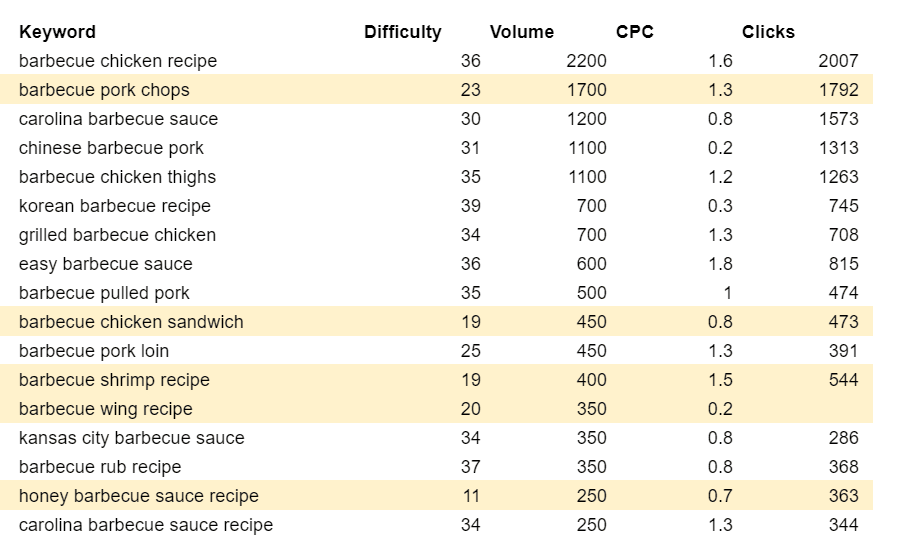
If you’re not sure whether you can rank for a term, you can do a quick check by searching for it in Google and review the sites on the first page:
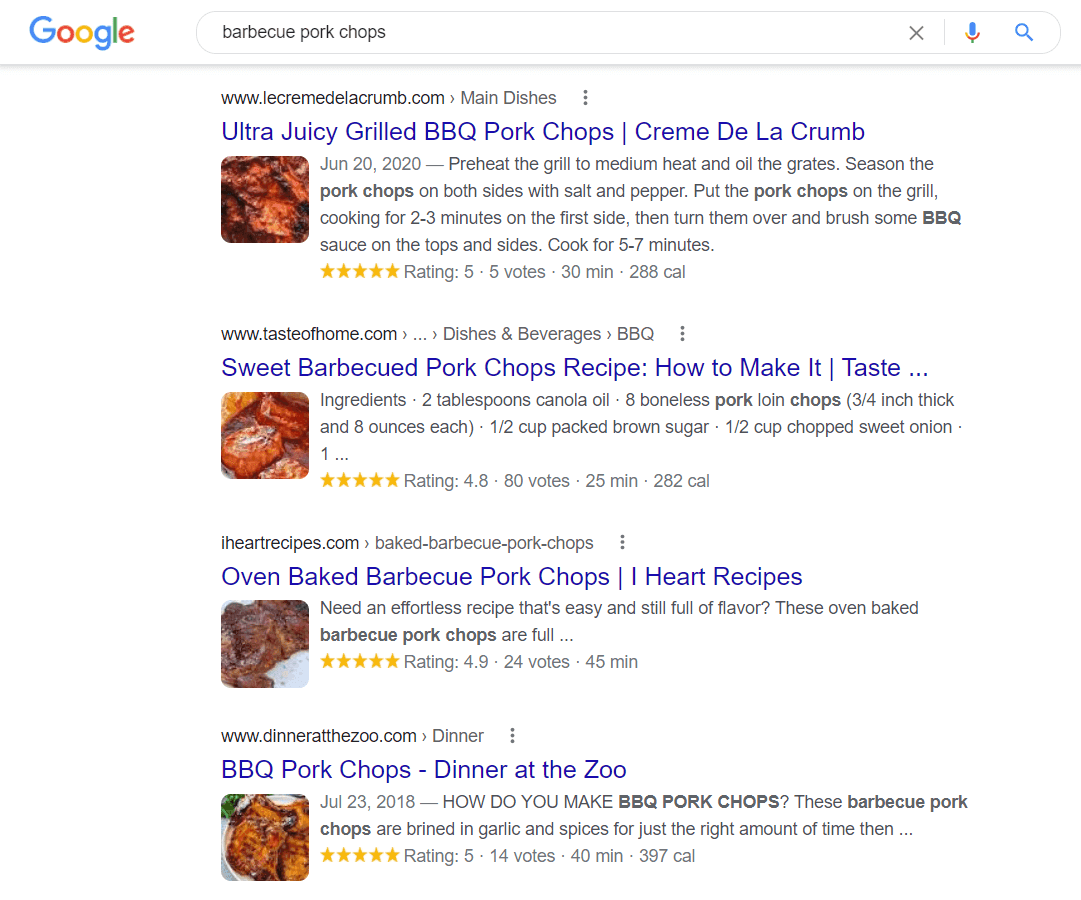
With “barbecue pork chops”, many of the sites on the first page are smaller sites, so you know you’ve got a good shot to get there, too. On the other hand, if the first page is filled with large authority sites, you might decide to save that keyword for the future.
Target Relevant Head Terms
By focusing on low-difficulty keywords, you’re building a long-tail keyword strategy that can get you a lot of quick wins, but it’s important to take a balanced approach.
Blending relevant, high-difficulty terms into your content strategy enables you to go after long-term SEO goals as you build your site’s authority, while you continue to generate short-term wins from your low-difficulty target keywords.
For example, “barbecue” is a challenging keyword that you probably won’t be able to rank for quickly, but you can continue to build toward this goal by growing your site’s authority and ranking for less competitive keywords, like “Carolina barbecue sauce”:

Determine Search Intent
You’ve got a list of promising keywords, but before you throw them into your calendar, you need to know the underlying reason why people are searching for them. That underlying purpose is known as search intent.
When a user types a term into a search engine, they typically have one of three goals in mind:
- Informational: The user is seeking information. These searches include simple factual questions, like “who is the chairman of the Federal Reserve”, and more in-depth queries, like “how to play Canasta”.
- Transactional: The user is in buying mode. Commercial searches, like “moz vs. ahrefs” or “best Japanese knife set”, help them gather information to review their options. Users may also be looking for a place to make a purchase, like with “refurbished dell XPS 15”. As they complete their purchase, they could be looking for information on promotions and pricing with searches, like “Wayfair coupon code” or “mirror price”.
- Navigational: The user is looking for a specific website. With these searches, users might not remember the exact URL, or they may simply find it easier to do a Google search. Examples of navigational searches include “LinkedIn” and “CoSchedule Headline Studio”.
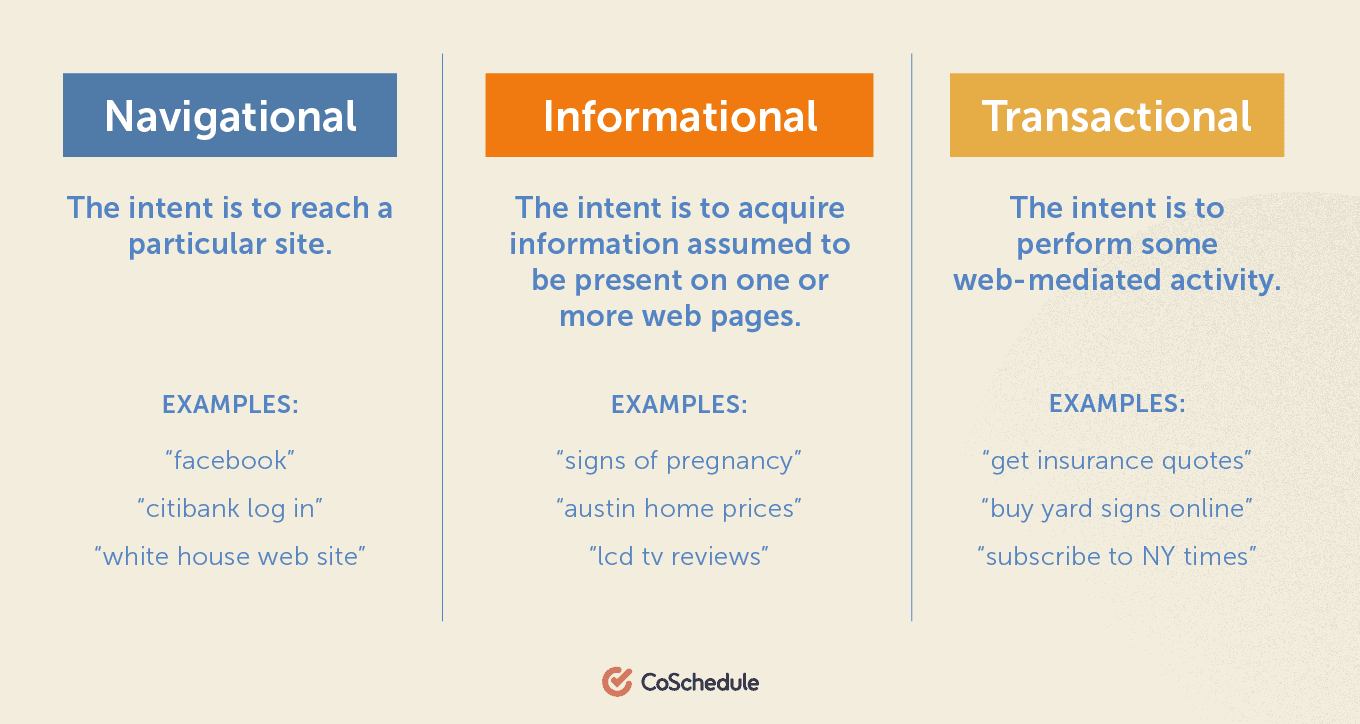
Now is the time to review your keywords for search intent. Go through your keyword list and classify each one, so you’ll know what types of content to create. Prioritize informational and transactional keywords that can grow your audience and attract potential buyers.
For example, suppose you’re building a marketing site, and you see that “really good emails” is a high-volume, low-difficulty keyword:

You’re tempted to go after this keyword by crafting a blog post with lots of examples of great marketing emails; however, first, you do a quick Google search:
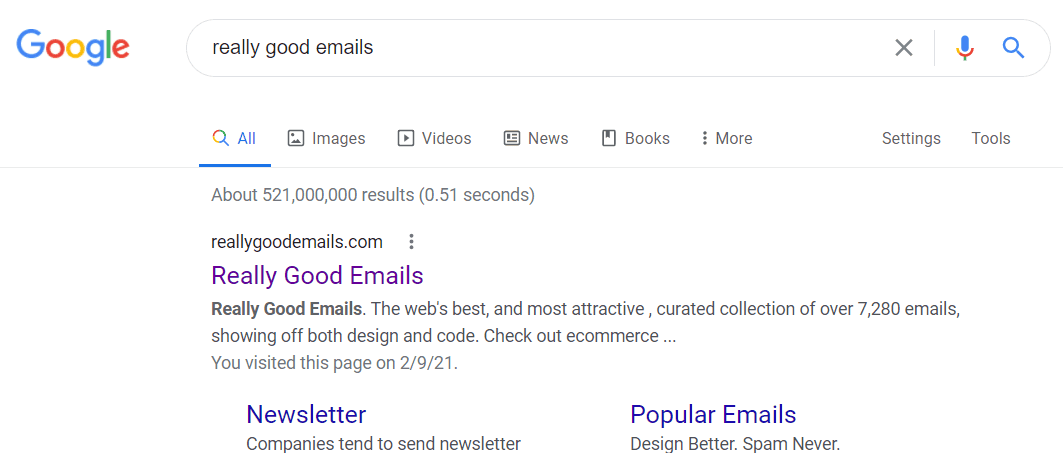
From the first page results, it’s clear that “really good emails” is a navigational keyword. Users searching for this term are likely trying to get to the Really Good Emails site, so trying to rank for this keyword could be a waste of time.
Whenever you’re in doubt, pop it into Google and see what comes up. The top-ranked results should give you a good idea of what users are looking for.
Build Your Content Calendar
Finally, it’s time to create your content plan.
You’ve built out your keyword list., prioritized high-volume and low-difficulty opportunities, and organized it by search intent — so you know the right kind of content to create.
Using a content calendar template can make scheduling your content a snap. Just keep these best practices in mind:
- Plan a realistic content cadence. It’s easy to set a super-ambitious publishing schedule. It’s a lot harder to stick to it. Set a publishing schedule you can realistically stick to, and you’ll build a steady string of successes.
- Write your content for humans and SEO. Finding great keyword opportunities is just the first step to creating remarkable content. As you write, you need to focus on engaging readers while also optimizing your content for search. Follow these SEO copywriting best practices to ensure you get the best results possible.
- Choose your publishing times wisely. Nothing is more frustrating than pouring hours of work into a piece of content, finally hitting “publish”, and watching it flop. Set yourself up for success by scheduling your content to go live at the best times to attract readers.
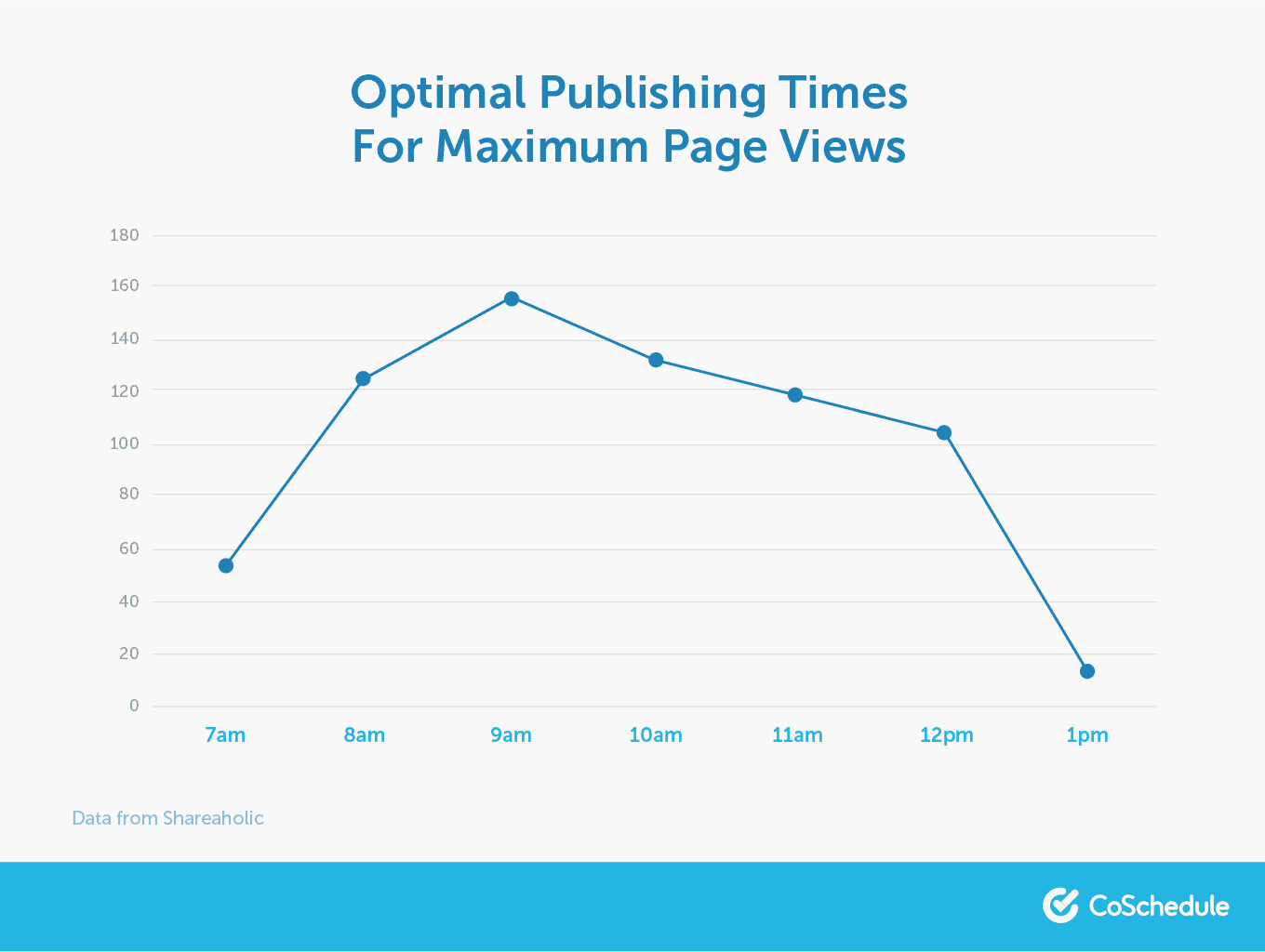
Crush Your 2021 Marketing Goals With a Strong Keyword Strategy
Creating content shouldn’t be a guessing game. With this simple, step-by-step process, you can quickly generate plenty of promising ideas and prioritize the most promising topics in your content calendar.
The best way to get results is to just get started. Take a couple of hours this week to walk through these steps and build your content plan for 2021. Before long, you’ll be creating high-value content on the regular and driving more traffic and sales for your business.
The post The Ultimate Keyword Strategy to Fill Your Editorial Calendar appeared first on CoSchedule Blog.


![Read more about the article What Marketers Can Learn From Nonprofits About Building Brand Advocacy (and Why They Should Start Now) With Spencer Brooks From Brooks Digital [AMP 214]](https://www.dimaservices.agency/wp-content/uploads/2020/12/214_Spencer-Podcast-Graphics_header-300x128.png)

